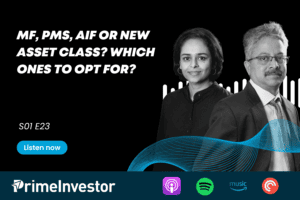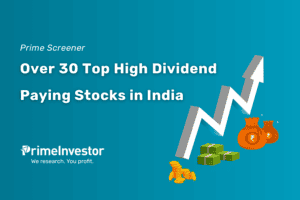About a month ago, we had written on ETFs that can be part of your portfolio. We had, in this, discussed factor-based indices and that we would be analysing some of these indices. The NFO floodgate has opened recently, and passive options through ETFs or index funds dominate the list. So, here’s making a start on some of the newer indices that are cropping up in the list.
In this analysis, we look at indices on the ‘Quality’ factor. There are two NFOs running now – DSP Midcap 150 Quality 50 Index fund (there’s already the ETF version of this) and Aditya Birla SL Nifty 200 Quality 30. These two indices join the Nifty 100 Quality 30 index, on which there is an already existing ETF (from Edelweiss).

Defining quality
A factor index is one that uses a parent index, applies a factor (or a combination of factors) on the constituents of this index and forms a new index based on the stocks that meet the factor criteria.
The NFOs and funds mentioned above are all built on NSE’s quality factor indices. The three indices we’re picking apart here are:
All three indexes above are based purely on the ‘quality’ factor. So, what’s quality? The index methodology considers 3 metrics for arriving at a stock’s quality score –
- the return on equity,
- debt-equity ratio, and
- variability in earnings growth over the past 5 years.
Each metric receives an equal weight while calculating the score. For financial companies, since the debt-equity ratio as a metric does not apply, it is dropped and the other two metrics alone are used.
In this way, the quality score for each stock in the parent index is calculated. The top 30 or 50 stocks on the quality score are considered for the new factor index. A stock’s weight in the new index is based on its quality score and free-float market capitalisation. Individual stock weight is capped at 5% and the index is rebalanced every half-year.
With that explained, let’s move on to performance.
Nifty 100 Quality 30 & Nifty 200 Quality 30
These two indices can be clubbed together from the perspective of inclusion in a portfolio. Though the Nifty 200 is a wider index than the Nifty 100, it is still large-cap dominant. Between the Nifty 200 Quality 30 (N200 Q30) and the Nifty 100 Quality 30 (N100 Q30), close to 75% of the stocks overlap. The funds and ETFs, both NFO and existing, that are built on these two indices are in the table below.
A call on whether or not to include these indices in your portfolio needs to be based on what differentiation it can bring. Let’s look at them as follows:
#1 Index composition
The N100 Q30 and the N200 Q30 are very different from their respective parent indices – both the manner of selection and the caps on weights make the quality indices far broader than their parents. Therefore, in terms of providing diversification away from both the main market indices and other equity funds, the two quality indices do fit the bill.
For example, the top 5 stocks in the two quality indices each have a 5% weight. In contrast, the heaviest weight in both the Nifty 100 and the Nifty 200 is Reliance Industries at 11.1% and 9.6% respectively. This can spur difference in performance, even as stock overlaps between the indices may exist.
What can also aid a difference in performance is that the overall sector representations are also vastly different. Neither of the two quality indices have much representation from the financials space, for example, but have a far bigger presence in sectors such as IT.
#2 Performance
Next, take the performance. There are two aspects to look at here – one, how these indices fare against the parent and two, the relative performance between the two indices as both are similar as can be seen in the tables above.
The parent index for the N100 Q30 is, obviously, the Nifty 100. Now, this is a fairly formidable large-cap index which even large-cap funds have a hard time beating consistently. The N100 Q30 does not stack up well against the Nifty 100 – and consequently, the Nifty 50 as well. Taking the rolling 1-year returns since inception of the N100 Q30, the index beats the Nifty 100 just about 57% of the time; consistency is even lower considering longer-term periods.
This lack of consistency becomes important as looking at plain average returns for the N100 Q30 shows this index in slightly better light than the Nifty 100. Essentially, while the N100 Q30 has a chance of delivering marginally higher returns than the N100, the probability that it does so is low.
Volatility in returns is similar, too. In our view, the N100 Q30 does not have enough of an edge over its parent to warrant an inclusion in a portfolio. 1-year and 3-year returns for the index have been below the Nifty 100 since the start of 2021.
The N200 Q30, though, does a far better job at beating the Nifty 200. On both a 1-year and 3-year basis since inception, the N200 Q30 beats the Nifty 200 about 70-75% of the time. The margin of outperformance is also quite significant.
The N200 Q30 is also far better than the N100 Q30; this outperformance could stem from the small mid-cap component that the index has as well as the N100 being dragged by other underperformers. The N200 Q30, for instance, could have received a boost from stocks such as IEX, Coromandel International, or Page Industries.
However, while consistency is high, the index is certainly not an all-time performer. The N200 Q30 has also been lagging the Nifty 200 in recent times. The fact that these are, relatively speaking, new indices, necessitates watching performance.
Also, for many of these factor indices, back-tested data may not be very helpful to judge future performance, as the index construct may have always been tweaked based on the outcome of such back-tested data.
Should you invest in these factor index funds?
- These factor indices cannot substitute the large-cap component in a portfolio, whether you are using active or passive options. Market-cap based indices (such as the Nifty 50, Nifty 100 or Nifty 500) remain the first bet to play the market. However attractive a factor can be, the collective market wisdom that market-cap indices represent cannot be ignored.
- You need not switch from the marketcap based indices to these ones. Use these options as portfolio diversifiers only, if you are keen to expand your passive portfolio.
- Investors with smaller portfolios can skip these options and stick to plain-vanilla indices such as the Nifty 50 or the Nifty 100.
- Start with small allocations for now – without more information on performance and tracking error, it's best to avoid excessively relying on past numbers and go for high allocations.
- There is a limited record in terms of tracking error. As far as the ETFs go, volumes are an additional risk factor. While the SBI Quality 30 ETF has been around for years, its volumes are very poor. For the new ETFs, there is absolutely no clarity on what kind of volumes it could see which additionally impacts its tracking error.
Nifty Midcap 150 Quality 50
The funds that track this index – both NFO and existing – are as follows.
The Nifty 150 Quality 50 (N150 Q50) has low individual stock weights, similar to its parent Nifty Midcap 150. Sector allocations are also different.
As an index, the N150 Q50 certainly has scored a shining performance against the Nifty Midcap 150. Going by the numbers, the N150 Q50 has beaten the Nifty Midcap 150 a good 85% of the time on a rolling 3-year basis since inception as well as the Nifty 500 index. It is less volatile and contains losses better.
However, the N150 Q50 is a bit of a tricky bet. In a mid-cap rally, especially once it gets well under way, a far wider swath of stocks deliver. Therefore, a broader index such as the Nifty Midcap 150 sees more participating stocks than the narrow Q50. This apart, factors such as strong balance sheets and company quality take a backseat during heady upswings. Going by 1-year returns, the Q50 has lagged the Nifty Midcap 150 during years such as 2016, 2017 and 2021, all periods of sharp rallies. This index is still below the Nifty Midcap 150 even now.
The same holds for active mid-cap funds as well – those that beat the Nifty Midcap 150 index also score over the Q50.
The index’s ability to keep losses contained better has helped its overall consistency over the longer-term period. This can be among the reasons to include the index in a long-term portfolio - as mid-caps go through wide swings, a lower volatile option can work out in the long term. It is best that this index is combined with more aggressive active mid-cap bets, to play the mid-cap space more effectively. Given that both index and funds are new, as explained in the section above, keep allocations low to begin with.
A note on factor investing
When it comes to indices built on factors, it is important for you to know that not all relevant factors under a head may have been considered, like you would, when you screen for stocks yourself. For example, ‘Quality’ as a factor involves looking at multiple metrics which also vary for different sectors. In Nifty 100 Quality 30 for example, just 3 metrics are considered and one is further dropped because it is not relevant to the financial sector.
Hence, what you get as a list of filtered stocks may not be the best candidates fitting the ‘ said factor’. This is a limitation in the way these indices are filtered. To this extent, going with the market wisdom (marketcap based investing) may sometimes be a safer bet. This is also why we ask you to go slow on these factor-based indices and keep exposures low.







10 thoughts on “Prime Review: 3 passive indices built on ‘Quality’”
Hi Bhavna. Thanks for the write up. Just thinking aloud, these cherry picking are more like focussed funds only difference being they are not across caps. Too many cuts from same cloth just adds confusion instead of simplification for investors – more of a query for everyone in industry.
No, focused funds are very bottom-up, stock-specific funds. The top holdings can go up to 8-9% as well. Factor indices take a few metrics that would define a factor, apply it on the parent index and create a new index. They will behave very differently from focused funds. – thanks, Bhavana
Hi Bhavana …
According to my understanding, biggest drawback of ‘Quality’ based factor indicies is that there are no filters of ‘valuation metrics’ as well, to shortlist the stock for the index. Overvalued stocks can also make its way in to the index based on 3 factors score.
Your take..?
Regards
Jatin
Valuation is a separate factor 🙂 This one is a single-factor index and therefore cannot consider all metrics that would normally go into stock selection; this is a drawback for factor indices. So you would have highly valued stocks if they top the quality factor. See the note at the end, above. – thanks, Bhavana
Thanks Bhavana Ma’m for the detailed article.
PrimeInvestor team is doing a wonderful job in bringing up unbiased articles like this.
The current tracking errors in pure Midcap 150 index funds is too high (Motilal oswal & Nippon which have decent ~3 years of existence). Also, what’s your view on impact cost of Midcap 150 vs Midcap Q50 index funds. Will the Midcap Q50 may have lower tracking error in the long run due to more efficient impact cost compared to Midcap 150 ?
Best Wishes
Thanks! Yes, the tracking error in the mid-cap indices are higher than with large-cap based index funds but that is the nature of the segment and there’s limited way around it unless liquidity improves in the smaller stocks. The Q50 has fewer stocks, but here too the tracking error will depend on the liquidity in those stocks. It simply remains to be seen and there is no way to judge at this point. – thanks, Bhavana
Graphs not loading
Sorry about that. It appears to be working fine for us. Could you please check again, and let us know if the issue persists? – thanks, Bhavana
Please write article on low volatility factor index too. Is it worth to invest in it to get lower volatility than the market broad index?
We have discussed the Low Vol index in earlier reports: https://www.primeinvestor.in/icici-pru-nifty-low-vol-30-etf-fof/ and https://www.primeinvestor.in/prime-recommendation-an-etf-for-uncertain-markets/. Please check Prime Funds (primeinvestor.in/prime-funds) and Prime ETFs (primeinvestor.in/prime-etfs) for our passive recommendations. – thanks, Bhavana
Comments are closed.